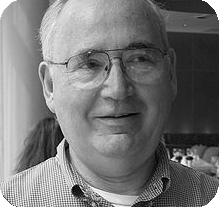
A.M. TURING AWARD WINNERS BY...
Dana Stewart Scott

United States – 1976
Short Annotated Bibliography
- Scott, Dana and Michael O. Rabin, “Finite Automata and Their Decision Problem,” IBM Journal of Research and Development, Vol. 3, Num. 2, 1959, pp. 114-125.This is the classic paper that introduced the concept of nondeterministic machines.
- Scott, Dana S., Outline of a mathematical theory of computation. Technical Monograph PRG-2, Oxford University Computing Laboratory, Oxford, England, November 1970.
- Scott, Dana S. and Christopher Strachey. Toward a mathematical semantics for computer languages, Oxford Programming Research Group Technical Monograph. PRG-6. 1971.The above two works give background to and the development of Scott and Strachey’s work on denotational semantics.
- Scott, Dana S. and C.A. Gunter, Semantic Domains, in Handbook of Theoretical Computer Science: Formal Models and Semantics, Vol. B, Jan Van Leeuwen (editor), Elsevier/MIT Press, 1990.This article gives an overview of some of his more recent work and what new directions are opening up for others to follow. The hope is that this work will also lead to better connections with information retrieval, electronic publishing, and more generally studies on the structure and production of electronic text.




























 THE A.M. TURING AWARD
THE A.M. TURING AWARD